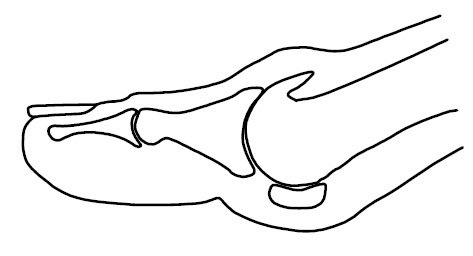 Arthritis of the big toe joint (Hallux Rigidus) can make walking and even wearing shoes painful. The spurs on top of the toe are the most common sources of pain. You may choose to try extra-depth shoes and use carbon-fiber inserts. If this does not control your symptoms, surgery is recommended.
Arthritis of the big toe joint (Hallux Rigidus) can make walking and even wearing shoes painful. The spurs on top of the toe are the most common sources of pain. You may choose to try extra-depth shoes and use carbon-fiber inserts. If this does not control your symptoms, surgery is recommended.
Cheilectomy (Chilectomy) is the procedure to remove the spurs and is performed on an outpatient basis. If damage to the joint is severe, the addition of a “soft-tissue arthroplasty” is often the best option. Although this decision is made intra-operatively, it does not alter the post-operative course.
Are you experiencing pain or discomfort in your big toe joint?
What Happens Before A Cheilectomy?
The surgical center will provide specific instructions for how you can prepare for surgery and what to expect when you arrive at the clinic. The day of surgery you will receive regional anesthesia to the great toe. It gives complete pain relief for over 12 hours. Patients report extraordinary satisfaction with this type of anesthesia. You will be given antibiotics just before surgery to help prevent infection.
What Happens During A Cheilectomy?
During the surgery you will be put into a relaxed state by the medication delivered through the I.V. A tourniquet will be placed around your calf. An incision is made on the top of the big toe joint. The dorsal spurs are removed, and toe motion is restored. If the cartilage is severely damaged, it is removed and replaced with your own local tissue known as a Soft-Tissue Arthroplasty. The wounds are closed with stitches. A sterile dressing and post-operative shoe are applied. Over the next six weeks this tissue turns into replacement cartilage.
What Happens After A Cheilectomy?
Once your anesthesiologist is satisfied that have recovered you will be permitted to leave the surgical center. During this recovery time your family member may take your prescription to the nearest pharmacy. You will be given crutches. Take your narcotic pain control medications before falling asleep or as you feel the “numbing” effect wearing off. Remember, post operative pain is much easier to control with prevention. Call to schedule your first post-operative appointment for 7 to 10 days after surgery when you feel able.
Chilectomy General Recovery Timeline With Or Without Soft Tissue Arthroplasty
This timeline is a general guideline. Your post-operative course may vary.
| Elevation | 23 hours / day for 3 days; then keep elevated as needed. Swelling may last over 4 months. |
| Motion | Begin moving your great toe gently after 3 days. After 7 days progress to as much as you can tolerate several times per day. This will decrease pain, swelling, improve healing, and lead to better motion. |
| Walking | You may weight bear on the heel and outside of the foot only for 5 days then progress as tolerated. |
| Bathing | Do not soak incision for 2 weeks. After 3 days you may shower but do not let the skin by the incision become macerated. Since dirt from your body runs downhill you should clean this area last and dry it first. You may bathe after 2 weeks. |
| Pain Control | Expect to use strong narcotics for the first 3-5 days. Wean off as soon as you are comfortable using Tylenol, Motrin or Ultram (Rx only). |
| Work | Return depends on specific demands. It is safe to return to sedentary work at 10 days post-op. Return to heavy labor may take 6 weeks to 3 months depending on the type of surgery and the amount of swelling. It is very patient dependent. Return to exercise is as tolerated after 4 weeks. |
| Driving | Patients with left foot surgery may drive an automatic transmission. Patients with right foot surgery must wait until healing is adequate and they feel safe. |
Routine Clinic Visits
| 7-10 days | Confirm incision is healed. |
| 2-3 weeks | Resume normal activity as tolerated. |
| 6 weeks | Expect return to sports. |
| 3 – 4 months | Return if you have pain, other concerns, or per Dr. Silverman’s instructions. Minimal feelings of discomfort may linger, your overall comfort level improves over a year. |
| ********** | If at any time during your post-operative period you notice any drainage or foul odor from your incision, a temperature of more than 100.4 degrees and/or increased swelling or tenderness, you should contact our office./td> |
For more helpful tips, check out these rehab exercise videos that will help you recover, or reach out to Dr. Silverman for more information!